CryoLetters Volume 44 - Issue 5
CryoLetters 44 (5), 249-257 (2023)
© CryoLetters, editor@cryoletters.org
doi.org/10.54680/fr23510110112
PERSPECTIVE: Potential and reality of cryopreserving somatic cells of wild felids for conservation
Luanna Lorenna Vieira Rodrigues and Alexsandra Fernandes Pereira*
- Laboratory of Animal Biotechnology, Federal Rural University of Semi-Arid (UFERSA), Mossoró, RN, Brazil
*Corresponding author’s E-mail: alexsandra.pereira@ufersa.edu.br
Abstract
The loss of biodiversity caused by anthropogenic actions is also a reality for the members of the Felidae family. Except for the domestic cat, all felid species have some degree of threat of extinction in their natural habitat. For this reason, felids have been included in conservation-related studies. This scenario has aroused increasing interest in the formation of somatic cell banks, which when efficiently implemented can be used in preservation strategies for the species. Nevertheless, one of the important steps in the formation of these banks is the understanding of the technical principles and variations involved in cryopreservation techniques, especially because cryopreservation increases the possibilities for Assisted Reproduction Technologies (ARTs) by making the use of biological materials independent of time and space. In wild felids, several species already have promising results in the formation of somatic cell banks, and studies aimed at better viability rates have been constantly proposed, as well as new species have been studied. In some species, aspects involved in successful cryopreservation are already well defined, and slow freezing associated with cryoprotectant solutions composed of intra- and extracellular substances is the most useful approach. The aim of this review was to present the main parameters involved in the elaboration of a somatic cell cryopreservation protocol and their effects, as well as to address the main results achieved for different wild felids.
Keywords: biological banks; conservation tools; slow freezing; cryoprotectants
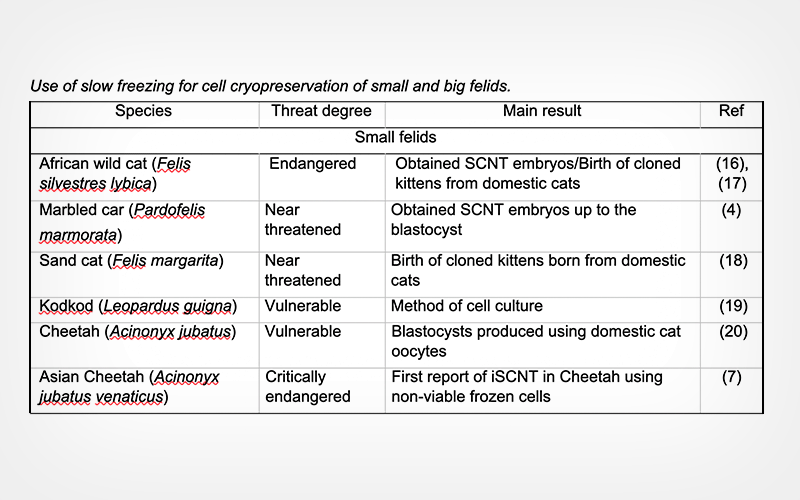
CryoLetters 44 (5), 258-262 (2023)
© CryoLetters, editor@cryoletters.org
doi.org/10.54680/fr23510110312
Enhanced heat transfer by medical gauze for cell vitrification with French straw
Tao Song and Baolin Liu*
- Institute of Biothermal Science and Technology, University of Shanghai for Science and Technology, 516 Jungong Road, Shanghai 200093, China
*Corresponding author’s E-mail: blliuk@163.com
Abstract
Background
Film boiling occurs in the cooling process of samples with liquid nitrogen, which limits heat transfer and decreases the cooling rate.
Objective and methods
The study developed a method to enhance convective heat transfer by wrapping the French straw (FS) with a layer of medical gauze upon cooling to eliminate film boiling. A numerical model was used to study the thermodynamic mechanism in the method.
Results
Numerical simulation based on heat transfer and crystallization equations indicated that wrapping the FS with medical gauze could suppress film boiling. Experimental verification showed the increased cooling rate and better cell survival when wrapped FS was used.
Conclusion
Numerical simulation and experimental verification demonstrated the efficacy of wrapping FS with medical gauze for better cell cryopreservation.
Keywords: cell proliferation; cooling; crystallization; heat transfer; numerical model
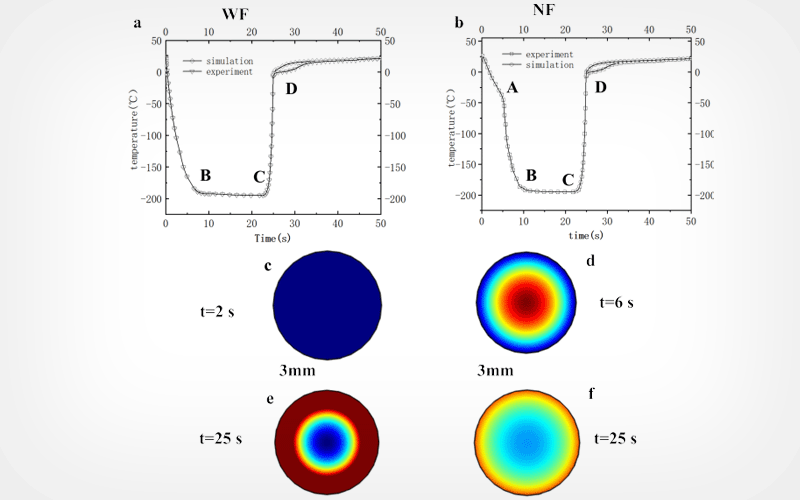
CryoLetters 44 (5), 263-273 (2023)
© CryoLetters, editor@cryoletters.org
doi.org/10.54680/fr23510110512
Cryopreservation of Lilium candidum germplasm: analysis of pre- and post-freeze treatments
Hilal Büşra Tokgöz1,2, Hakan Karakaş1, Ergun Kaya1, Hasan Yıldırım3, Ademi Fahri Pirhan3 and Filiz Altan1
- Muğla Sıtkı Koçman University, Molecular Biology and Genetics Department, Faculty of Science, Muğla, Turkey
- Denizli Vocational School of Health Services, Medical Services and Techniques Department, Pamukkale University, Denizli, Turkey
- Ege University, Biology Department, Faculty of Science, Izmir, Turkey
*Corresponding author’s E-mail: afiliz@mu.edu.tr
Abstract
Background
Lilium candidum L. is a perennial ornamental plant that has various medicinal properties and is used in the cosmetic industry. The species is facing threats from urbanization and climate change and requires urgent protection. The most secure and efficient technology for the long-term storage of plant genetic resources is cryopreservation, which involves preserving genetic material at extremely low temperatures.
Objective
Today, plant biodiversity is endangered because of the narrowing of its natural distribution areas and/or destruction for different purposes. This study concentrated on creating a cryopreservation process using shoot tips and calluses as explant sources for the long-term conservation of L. candidum species.
Materials and methods
Populations of L. candidum naturally distributed from three different regions of Turkey (Kepsut, Balikesir; the area surrounding Bafa Lake, Aydın; and Fethiye-Muğla) were grown in vitro to supply shoot tip and callus explants. Prior to freezing by droplet-vitrification and vitrification techniques, shoot tips and calluses were treated with MS nutritional medium supplemented with 0.4 M sucrose 7 g/L agar and plant vitrification solution 2 (PVS2).
Results
Cryopreserved shoot tips showed the highest levels of regeneration (71.8%) after a PVS2 treatment of 90 min, while calluses showed the highest levels of regrowth (63.9%) after a PVS2 exposure of 60 min.
Conclusion
High levels of regrowth are produced when the various cryopreservation procedures described here are used to preserve both shoot tip and callus explants. This potentially makes the method promising for the long-term preservation of endangered L. candidum varieties.
Keywords: callus tissue; conservation; freezing; Madonna lily; shoot tip; vitrification
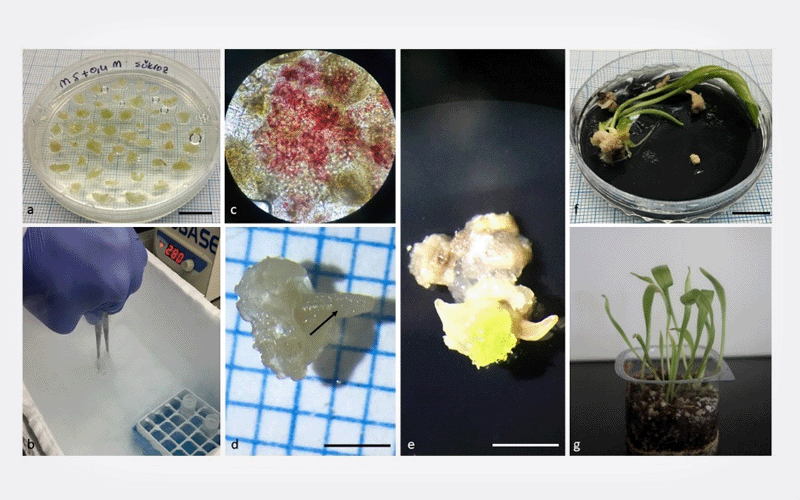
CryoLetters 44 (5), 274-279 (2023)
© CryoLetters, editor@cryoletters.org
doi.org/10.54680/fr23510110712
Cryopreservation of seeds of Neonotonia wightii Wight & Arn: a strategy for conservation, dormancy breaking and preservation of nutritional status
Yanier Acosta1, Doris Escalante1, Marcos Edel Martínez-Montero1, Dayleni Fortes2, Byron E. Zevallos-Bravo3, Elliosha Hajari4, Dayamí Fontes1 and José Carlos Lorenzo1*
- Laboratory for Plant Breeding and Conservation of Genetic Resources; Bioplant Center; University of Ciego de Ávila, Ciego de Ávila, 69450, Cuba
- Unidad Central de Laboratorios (UCELAB), Instituto de Ciencia Animal, Cuba
- Universidad Estatal del Sur de Manabí (UNESUM), Ecuador
- Plant Improvement; Agricultural Research Council-Tropical and Subtropical Crops; Private Bag X11208, Nelspruit, 1200, South Africa
*Corresponding author’s E-mail: lorenzojosecarlos68@gmail.com
Abstract
Background
N. wightii (Leguminosae) is valued as a cover crop and as a potential source of protein in food insecure countries. However, plantlet establishment is limited by physical dormancy. Our previous work has shown that exposure of N. wightii seeds to cryogenic temperatures is able to overcome physical dormancy.
Objective
The current study is an extension of that work where the field performance and nutritional composition of plants regenerated from N. wightii seeds was investigated.
Results
It was evident that plants regenerated from cryopreserved seeds displayed faster growth rates than those from control seeds. In addition, cryopreservation did not alter the nutritional profile of plants produced from cryo-stored seeds.
Conclusion
Collectively, the results indicate that cryopreservation serves as a suitable strategy for the preservation of seeds of N. wightii with the added benefit of also serving as a dormancy breaking mechanism upon retrieval from cryogenic temperatures.
Keywords: animal feed; crops; cryopreservation; legumes; nitrogen fixation; seed dormancy

CryoLetters 44 (5), 280-290 (2023)
© CryoLetters, editor@cryoletters.org
doi.org/10.54680/fr23510110212
Cloning, expression, purification and functional study of low-temperature chitinase PBCHI5 gene from marine-derived photobacteria
Jiawei Wu, Yeyu Liu, Jinping Zhang and Xiaohui Wang*
- School of Life Science and Technology, Dalian University, Dalian 116622, China
*Corresponding author’s E-mail: wangxiaohui@dlu.edu.cn
Abstract
Background
Chitin is the second largest carbon source on the earth, and chitosan oligosaccharides produced by its degradation have good application prospects in medicine, cosmetics, and agricultural production.
Objective
The discovery of a chitinase with high efficiency, high stability and clear degradation mechanism is of great help to promote the research of chitin derivatives and the development of the industrial chain.
Materials and methods
In this experiment, a low-temperature chitinase-producing strain Photobacterium sp. LG-29 was isolated from deep-sea mud in the Bohai Sea, and studied by means of molecular biology, biochemistry and bioinformatics.
Results
Purification of chitinase yielded an enzyme solution with a concentration of 0.918 mg/mL and a specific activity of 21.036 U/mg. The optimum action temperature is 35°C, and it is still active at 4°C, showing low-temperature enzymatic activity, and also has certain thermal stability. The optimum pH is 8.0, and it maintains more than 70% of the enzyme activity at pH 11, which is very stable in an alkaline environment. Mn2+, Ca2+, and Mg are the main activators of enzymes, while Fe, Zn, etc. have extremely significant inhibitory effects on enzymes. The Km and Kcat of chitinase were determined to be 269.05 μmol/L and 0.49 min-1, respectively. Chitinase PbCHI5 has both endonuclease and exonuclease activity. The theoretical pI of the enzyme is 4.16, which is a stable hydrophilic protein.
Conclusion
This experiment laid a theoretical foundation for the development and utilization of new low-temperature chitinases.
Keywords: chitin; chitinase; degradation mode; enzyme activity
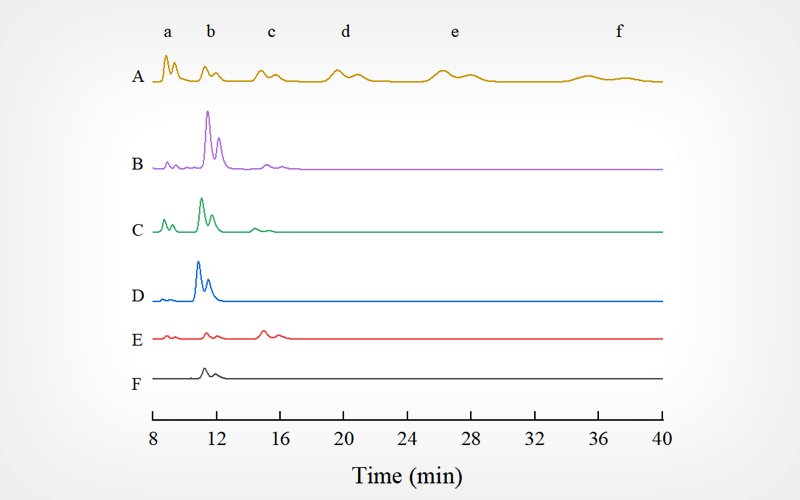
CryoLetters 44 (5), 291-298 (2023)
© CryoLetters, editor@cryoletters.org
doi.org/10.54680/fr23510110412
In vitro and in vivo effect of oxytetracycline on sperm parameters in breeding rooster
Linda Mohammedi1,2*, Ahmed Messai1,2, Leghel Touazi3 and Mokrane Iguer-Ouada4
- Department of Agricultural Science, DEDSPAZA Research Laboratory, University of Biskra, PO Box 145 RP, 07000 Biskra, Algeria. orcid.org/0000-0002-8348-2767
- Department of Agricultural Sciences, Laboratory of Promotion of Innovation of Agriculture in Arid Regions (PIARA), University of Biskra, PO Box 145 RP, 07000 Biskra, Algeria. orcid.org/0000-0002-1509-5319
- University Ferhat Abas, Department of Agronomy, 19000 Sétif, Algeria
- Department of Environment and Biological Sciences, Faculty of Natural and Life Sciences, A. Mira University, 06000, Bejaia, Algeria & Associated Laboratory in Marine and Aquaculture Ecosystems, Faculty of Nature and Life Sciences, University of Bejaia. Algeria. orcid.org/0000-0002-3218-0670
*Corresponding author’s E-mail: linda.mohammedi@univ-biskra.dz
Abstract
Background
Some antimicrobials could adversely affect sperm quality during sperm cryopreservation and antibiotic treatment with subsequent effects on fertility outputs. To our knowledge, no similar studies have been conducted on breeding roosters, especially for oxytetracycline (OTC).
Objective
To investigate both in vitro and in vivo impact of oxytetracycline on sperm parameters in breeding roosters.
Methods
Sperm motility parameters were objectively analyzed using the CASA system including total motility (TM %), progressive motility (PM %), all sperm velocities, the sperm count, and cell viability during 9 days of in vivo treatment. In the in vitro investigation, the pooled sperm was diluted and divided into a control aliquot (diluted in 0.9% NaCl) and treated samples. Motility parameters were assessed after 0, 1, 2, 3, 4, 5, and 6 hours of storage at 37°C. In the in vivo study, 1 g/L of OTC was administrated to five individuals for nine consecutive days. Fresh semen samples were analyzed at T0 (before treatment) and after 6 (T6) and 9 days (T9) of treatment.
Results
OTC caused significant impairment of sperm quality in vivo. A drastic reduction in sperm concentration, viability, TM, PM, and all kinematic parameters was observed after 6 days of treatment. However, at day 9 sperm quality had improved to be nearly similar to T0. In vitro, OTC induced similar sperm impairment on all sperm motility parameters.
Conclusion
Oxytetracycline exhibited negative effects on rooster sperm both in vivo and in vitro and appears consequently not suitable in cryopreservation extenders.
Keywords: breeding rooster; cryopreservation; kinematic parameters; oxytetracycline (OTC); semen
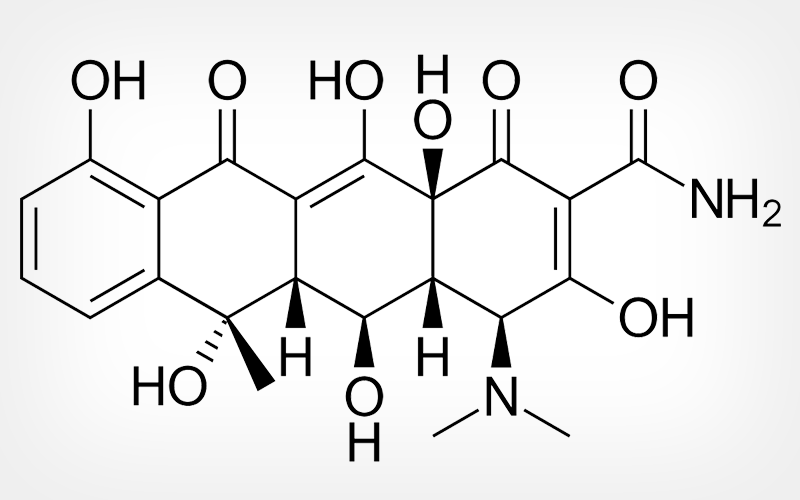
CryoLetters 44 (5), 299-306 (2023)
© CryoLetters, editor@cryoletters.org
doi.org/10.54680/fr23510110612
Effect of membrane stabilizers on semen quality and sperm membrane protein expression during cryopreservation of goat semen
Mitali Dutta1, Govindasamy Kadirvel2, Probodh Borah1, Sudip Sinha1, Kutubuddin Ahmed1, Girin Hazarika1, Rajeev Sharma1, Hitu Choudhury3, Sourabh Deori2*, Mohua Das Gupta1, Ranjan Kumar Biswas1, Shantanu Tamuly1, Prithviraj Mazinder Barua1 and Jakir Hussain1
- College of Veterinary Science, Assam Agricultural University, Khanapara, Assam, India
- ICAR Research Complex for NEH Region, Umiam, Meghalaya, India
- Krishi Vigyan Kendra, Dudhnoi, Assam, India
*Corresponding author’s E-mail: sourabhd1@rediffmail.com
Abstract
Background
Semen cryopreservation is a complex process during which there is alteration in the expression of sperm and seminal plasma proteins, molecular weight of protein or loss of membrane proteins during the process. In order to compensate for these changes, different membrane stabilizers are used in freezing semen extenders. However, there is scarcity of such studies during cryopreservation of goat semen.
Objective
To investigate the effect of membrane stabilizers on sperm membrane protein expression during cryopreservation of goat semen.
Materials and methods
A total of 36 semen ejaculates from nine Assam Hill Goat bucks aged 2 to 2.5 years was collected by artificial vagina method. Three membrane stabilizers, each at two different concentrations viz. 50 and 80 mM sucrose, 50 and 100 mM trehalose, and 100 and 150 ng/mL IGF-1 (insulin-like growth factor 1 protein) were added to Tris-citric acid fructose egg yolk glycerol (TCFEYG) extender and semen samples were cryopreserved. The sperm membrane protein profile was studied in fresh and cryopreserved semen by SDS-PAGE.
Results
SDS- PAGE of sperm membrane extract of fresh semen revealed the presence of 24 protein bands with molecular weights ranging from 10 kDa to 240 kDa. Samples supplemented with 50 mM sucrose and 80 mM sucrose revealed 21 protein bands with molecular weights ranging from 10 kDa to 240 kDa. All the 21 protein bands were same as those observed in the sperm membrane of fresh spermatozoa, except that the 23 kDa, 29 kDa and 42 kDa bands were absent in frozen semen. Similarly, frozen semen extended with 50 mM trehalose and 100 mM trehalose revealed 22 protein bands with molecular weights ranging from 10 kDa to 240 kDa, but lacking the 29 kDa and 42 kDa bands. Proteins with molecular weights of 29 kDa, 130 kDa and 240 kDa were absent in frozen semen supplemented with 100 ng/mL IGF-1 and 150 ng/mL IGF-1.
Conclusion
The present study revealed that supplementation of tris basic extender with trehalose at 100 mM and or IGF-1 at 100 ng/mL or 150 ng/mL improves the post-thaw semen characteristics and protects certain fertility related sperm membrane proteins.
Keywords: cryopreservation; goat; IGF-1; membrane stabilizer; semen; sucrose; trehalose
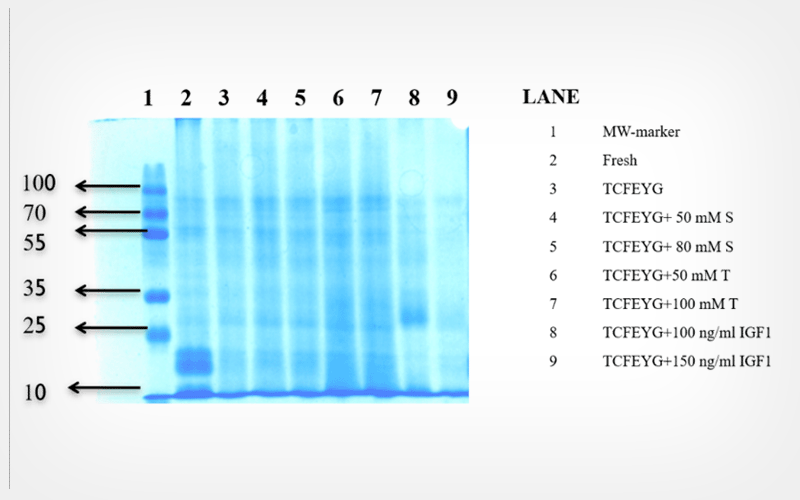
CryoLetters 44 (5), 307-313 (2023)
© CryoLetters, editor@cryoletters.org
doi.org/10.54680/fr23510110812
Effects of paclitaxel before vitrification on the nuclear maturation and development of immature porcine oocytes
M. Tone1, R. Ukyo2, S.H. Sakamoto2, K. Hemmi3, I. Kobayashi3
and Y. Tsuzuki1*
- Animal Reproduction Laboratory, Faculty of Agriculture, University of Miyazaki, Miyazaki 889-2192, Japan
- Laboratory of Animal Behavior and Environmental Management, Faculty of Agriculture, University of Miyazaki, Miyazaki 889-2192, Japan
- Sumiyoshi Livestock Station, Field Science Center, Faculty of Agriculture, University of Miyazaki, Miyazaki 880-0121, Japan
*Corresponding author’s E-mail: a01207u@cc.miyazaki-u.ac.jp
Abstract
Background
Cryopreservation of porcine oocytes is difficult compared with other species and immature oocytes particularly so compared to the meiotic stage.
Objective
To evaluate the efficacy of a pretreatment with 1 mM paclitaxel (PTX, 30 min exposure) before vitrification to promote the maturation of porcine immature oocytes.
Materials and methods
Cumulus cell-enclosed oocytes (COs) aspirated from porcine ovaries were divided into three groups: i) non-pretreated with PTX and non-vitrified group (control group); ii) pretreated with PTX and vitrified group (PTX-V group); and iii) non-pretreated with PTX and vitrified group (nPTX-V group).
Results
The nuclear maturation rate up to the preovulatory stage was significantly lower (P<0.05) in the nPTX-V group than in the control group, but was similar in the PTX-V and control groups. No significant differences were observed in viability assessed by a normal CO morphology and the embryonic development of oocytes activated by the parthenogenetic stimulation between the PTX-V and control groups, but not the non-PTX-V group.
Conclusion
PTX may promote the maturation of vitrified porcine immature oocytes.
Keywords: paclitaxel; porcine immature oocytes; vitrification








